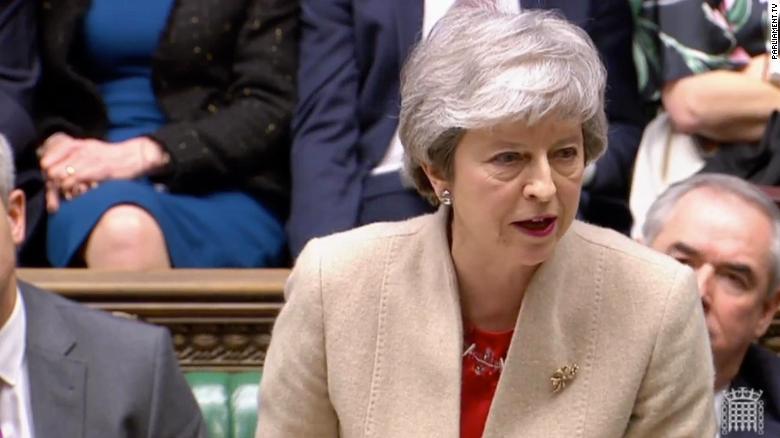UK Parliament has dealt May’s Brexit plan a fatal blow

The defeat of the Prime Minister’s withdrawal agreement by 344 votes to 286 came on the same day that Britain was originally supposed to leave the European Union, and left the path forward on Brexit unclear.The rejection of May’s plan raises the chances of a lengthy delay to Brexit or Britain crashing out of Europe without a deal on the new deadline of April 12. May had offered to resign if Parliament passed her deal, but ultimately she was unable to persuade enough MPs to back a plan they had resoundingly rejected in two previous votes. It may now rest on British lawmakers to find a way out of the impasse when they run a second vote on alternatives to May’s deal on Monday. None of the eight alternatives put before the House earlier this week gained a majority. A plan for the UK to remain in a customs union with EU came the closest, falling short by a margin of six votes, though a proposal for a second referendum gained the most “yes” votes overall. Lawmakers are now busy revising the plans to see if they can be made more likely to pass. Some may be combined with others.In a statement following the vote, May described the implications of the result as “grave” and said she feared “we are reaching the limits of this process in the House,” a suggestion that she could be considering calling a general election to resolve the Parliamentary impasse on Brexit. “On Monday, this House will continue the process to see if there is a stable majority for a particular alternative version of our future relationship with the EU,” May told the House of Commons. “This House has rejected no deal. It has rejected no Brexit. On Wednesday it rejected all the variations of the deal on the table. And today it has rejected approving the Withdrawal Agreement alone and continuing a process on the future.”If Monday’s indicative votes provide some clarity, the Prime Minister could, conceivably, ask Parliament to choose between her plan and the winner of the indicative votes. It’s not entirely clear how that would work.The result prompted Donald Tusk, the President of the European Council, to call for an emergency EU summit on April 10. A European Commission spokesman told CNN that it regretted the result of the vote and was “now fully prepared for a ‘no-deal’ scenario at midnight on 12 April.””The EU will remain united. The benefits of the withdrawal agreement, including a transition period, will in no circumstances be replicated in a ‘no-deal’ scenario. Sectoral mini-deals are not an option.”Calls for the Prime Minister to step down have continued to gather pace. Opposition Labour party leader Jeremy Corbyn once again said May needed to relinquish her position and trigger a general election. “On Monday this House has the chance … the responsibility to find a majority for a better deal for all the people of this country,” Corbyn said.Steve Baker, a leading member of the pro-Brexit group of MPs known as the European Research Group, echoed the appeal for May to step aside. “I regret to say it is time for Theresa May to follow through on her words and make way so that a new leader can deliver a Withdrawal Agreement which will be passed by Parliament,” he said, according to Britain’s Press Association.As the result was announced inside the House of Commons, several thousand Leave supporters converged outside Parliament in brilliant sunshine, angry over the delay to Brexit. Protesters wearing Union Jacks or carrying flags for the pro-Brexit UKIP party chanted “shame on you” and “out means out,” blocking several streets around Parliament in central London and bringing traffic to a standstill. Westminster Council said it was aware of up to 13 separate scheduled protests for Friday and the Metropolitan Police said “appropriate policing plans are in place,” PA reported.Earlier on Friday, CNN saw trucks carrying heavy-duty concrete blocks for barricades and metal railings as well as an increased police presence with additional vans and officers wearing high-visibility jackets.







